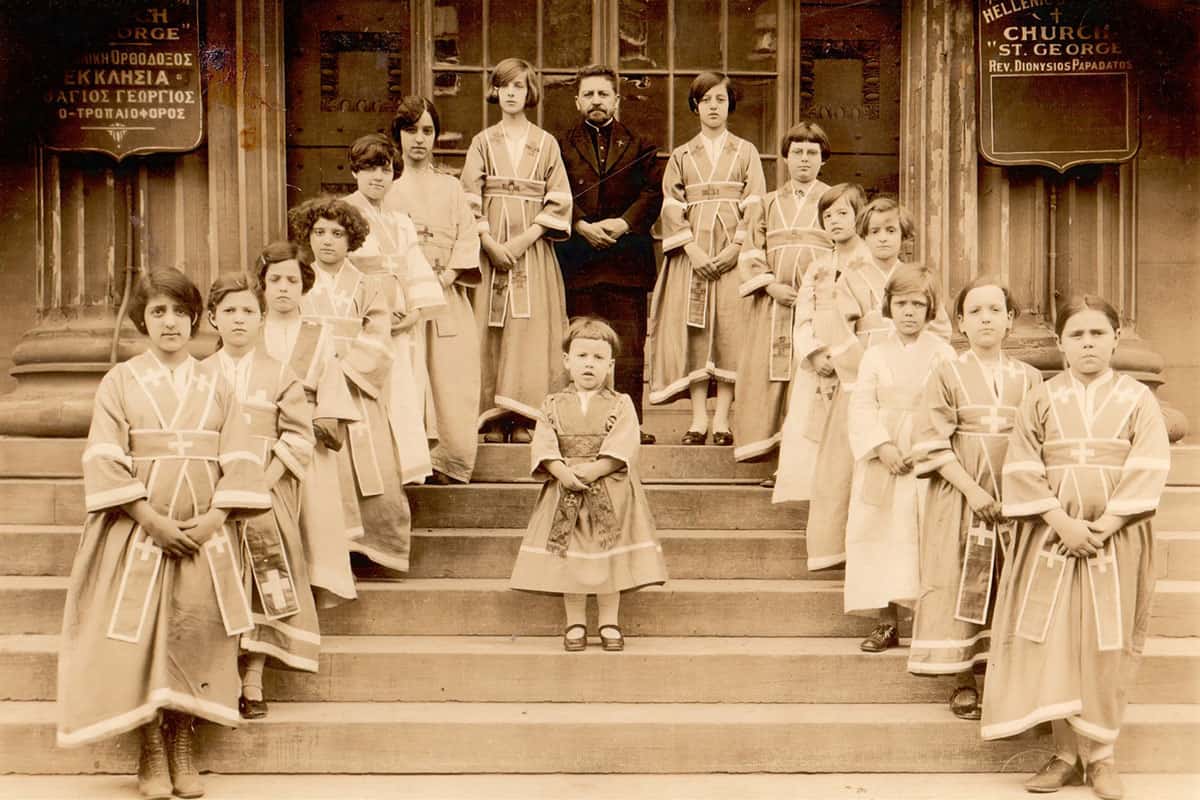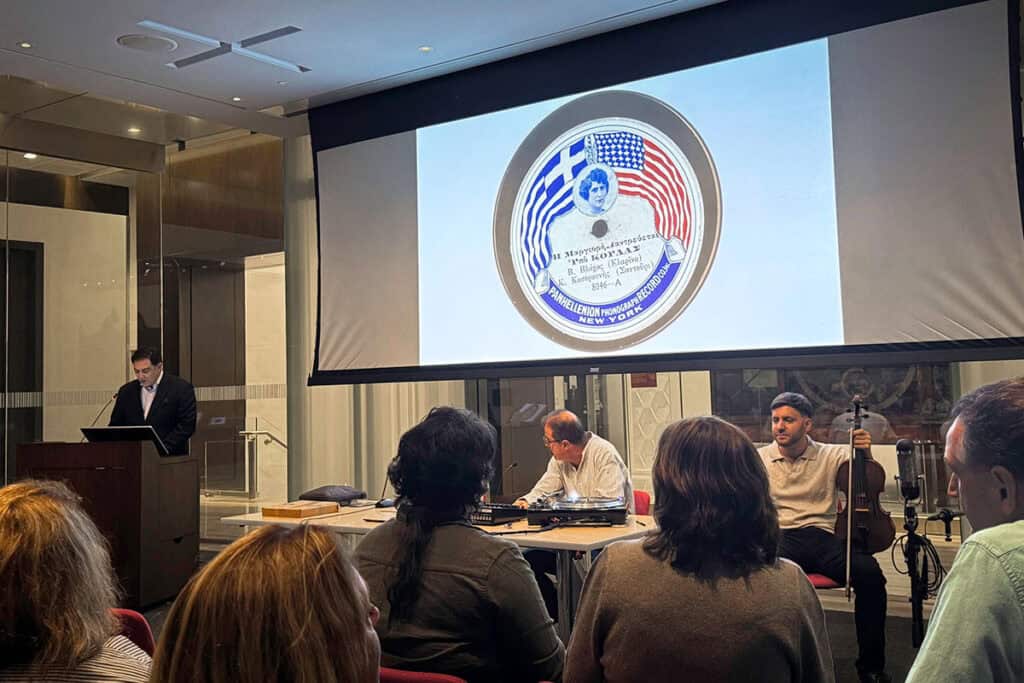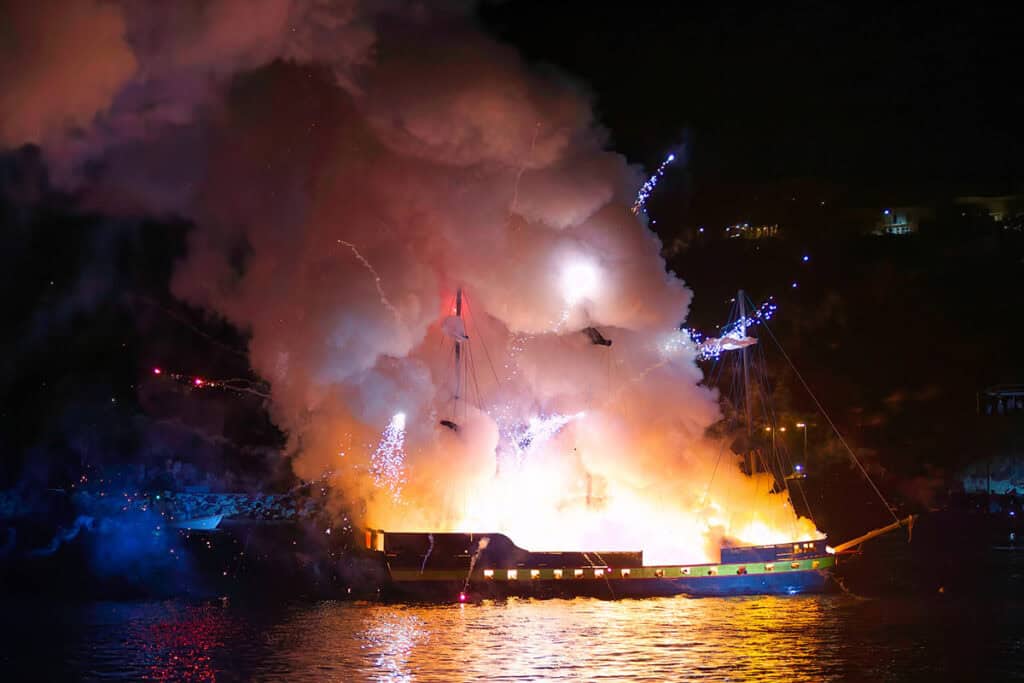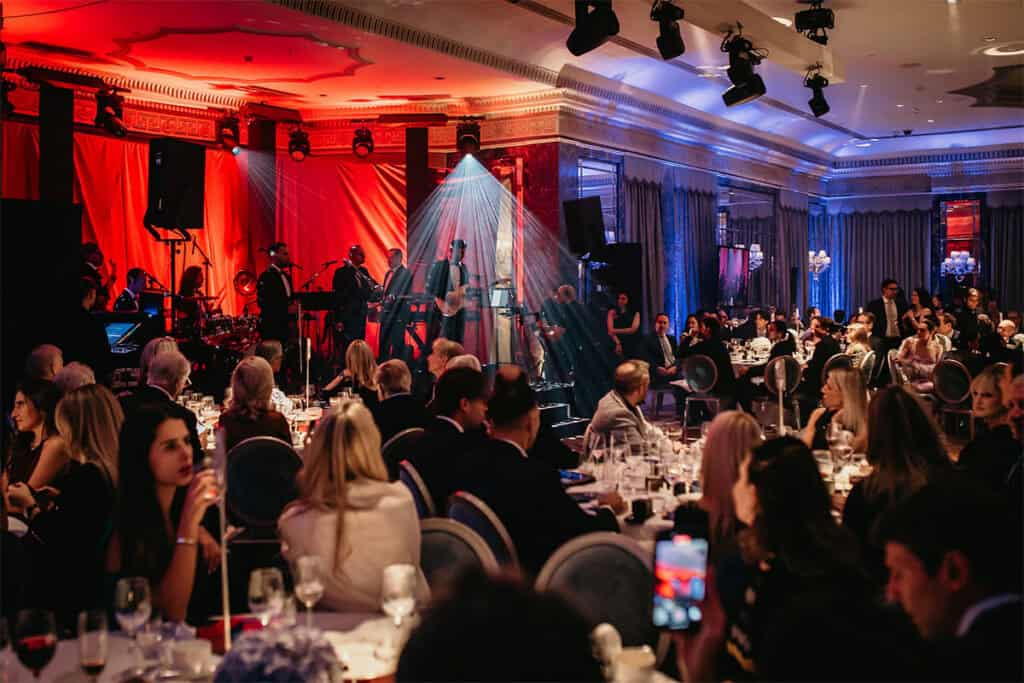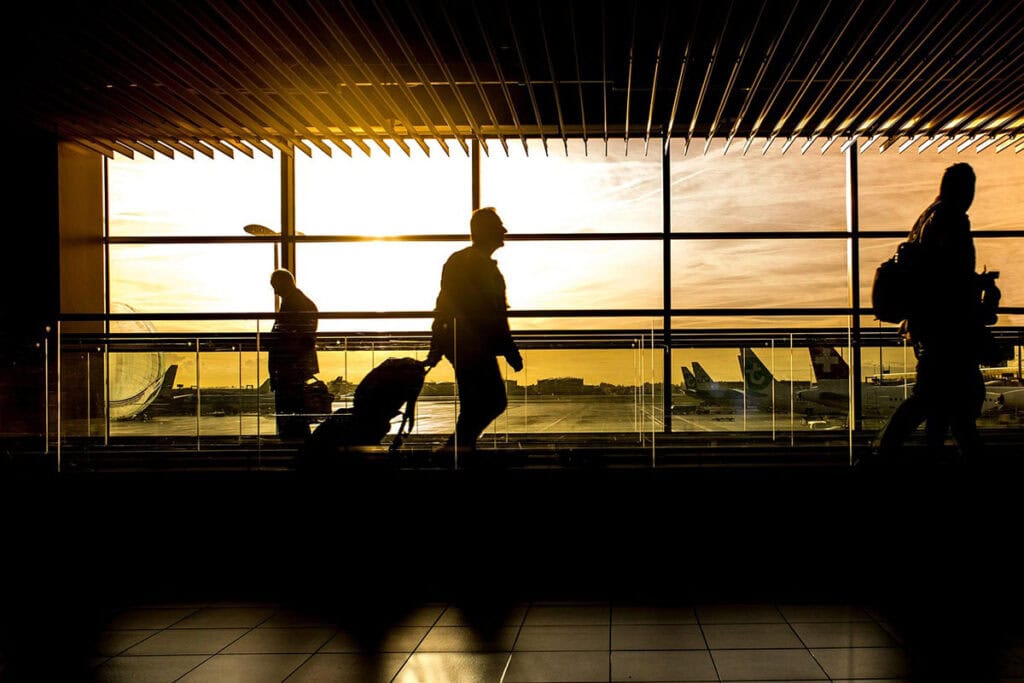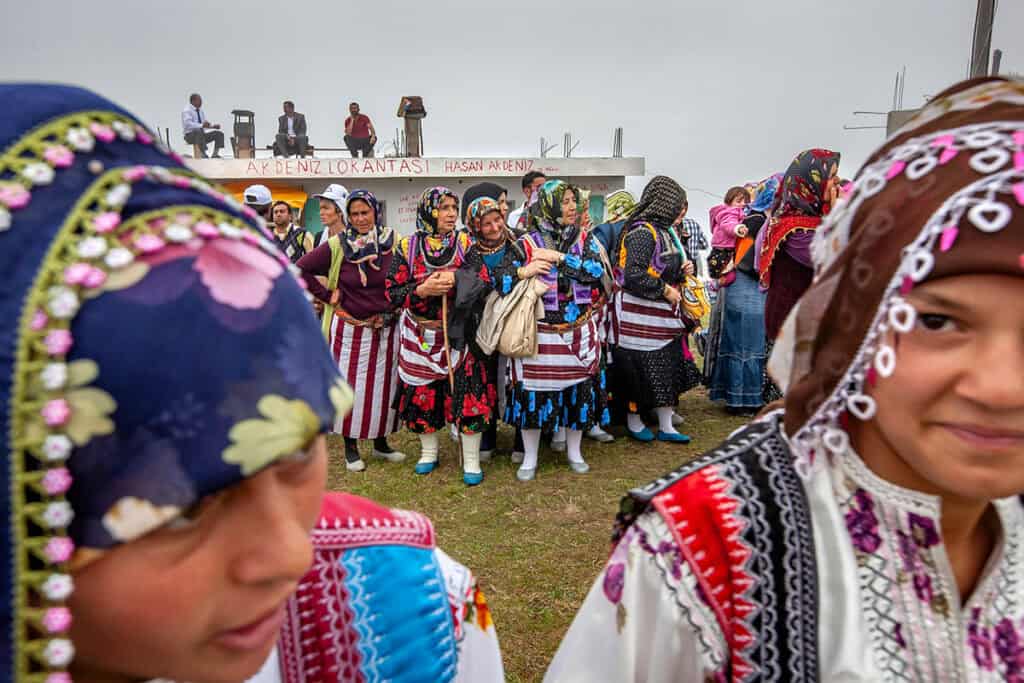What would your yiayia say if she learned that almost a century ago, girls in Philadelphia put on altar robes and served inside a Greek Orthodox sanctuary? For many, the idea sounds almost impossible. Yet in the archives of St. George Greek Orthodox Cathedral in Center City are photographs that capture just that moment in time.
The year was 1927. A group of girls, vested and solemn, stood on the steps of St. George. Another image shows them with their priest, the Very Reverend Dionysios Papadatos. Smiling but dignified, they appear in archival records under the description “Altar Girls of St. George’s Church.” These photographs are the earliest known evidence of officially sanctioned female altar attendants in Greek Orthodox America.
For anyone who assumed the altar was always reserved for boys and men, the pictures are startling. They reveal a forgotten chapter in Greek American history, one in which the needs of a young immigrant community opened the door to practices we do not usually associate with Orthodoxy.
St. George Cathedral has always been more than just a building. Founded in 1922, when Greek immigrants purchased the former St. Andrew’s Episcopal Church designed by John Haviland, it became the beating heart of the community. Weddings, baptisms, society meetings, and cultural events all unfolded within its neoclassical walls, where language, faith, and identity were preserved in the face of assimilation. And as these photographs show, it was also a place where children of immigrants found unexpected ways to be part of worship.
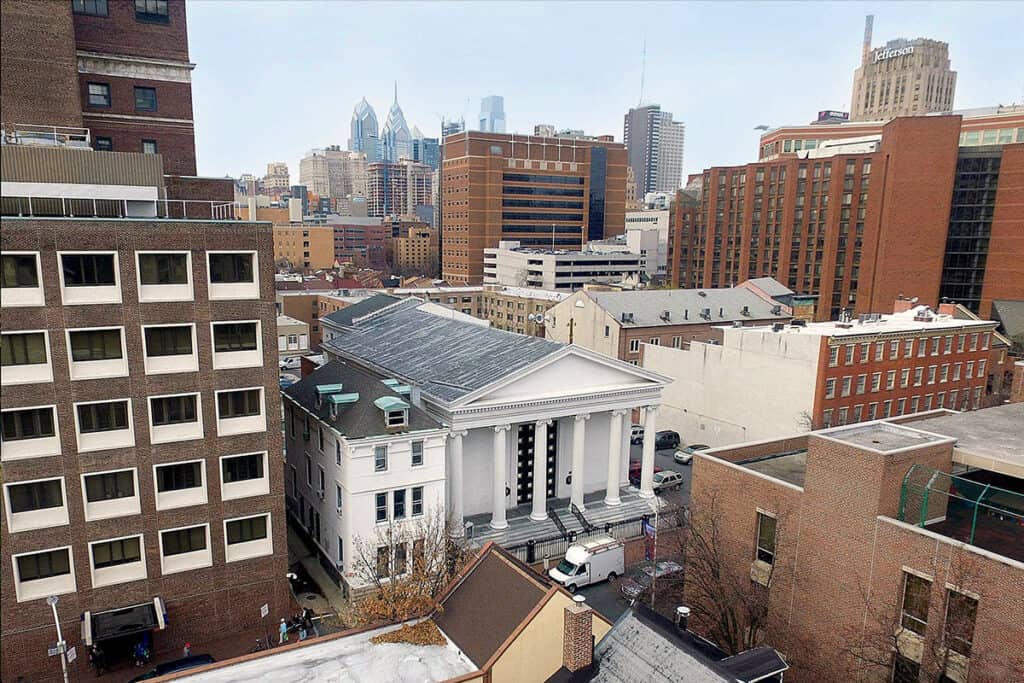
Why did St. George choose to vest girls at the altar? The answer lies in everyday realities. Many fathers and sons worked Sunday shifts in factories, shipyards, and rail yards, making it difficult to depend on them for service. Communities were small, and every volunteer was valuable. The photographs capture that world vividly: factory whistles at dawn, crowded rowhouses nearby, and daughters in vestments stepping forward where their brothers could not.
American-born girls wanted visible roles alongside their brothers, and their priest saw no reason to turn them away. Father Papadatos and his parish council responded with pastoral care and practicality. What might look revolutionary in hindsight was, for them, simply a way to keep worship alive.
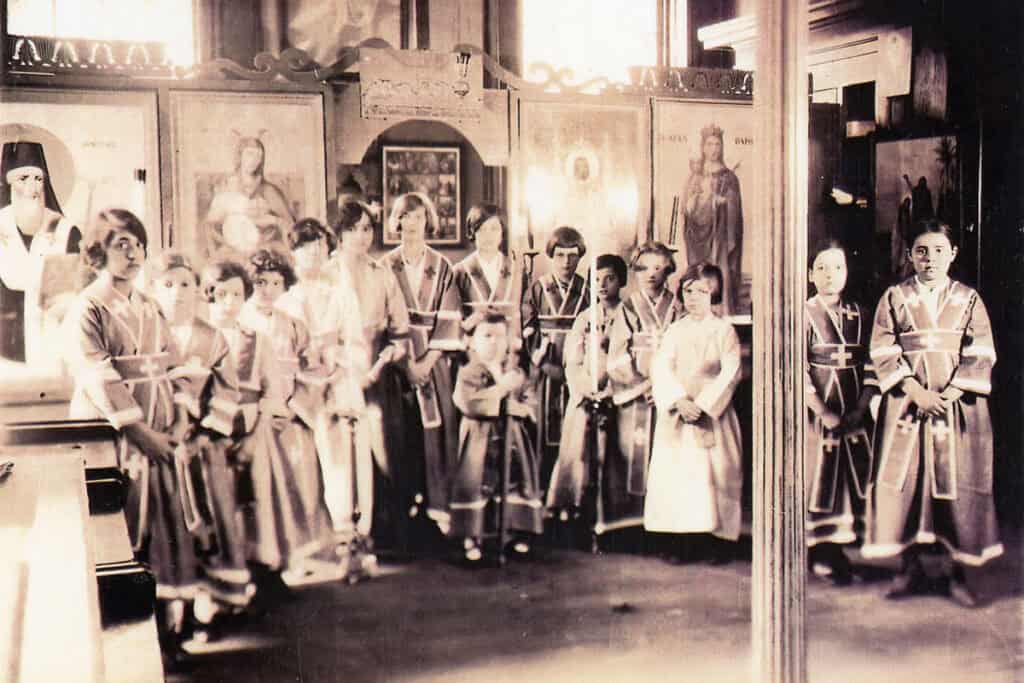
The Philadelphia photographs did not remain isolated curiosities. Reports from the 1930s and 1940s suggest that some parishes in Chicago, Boston, and on the West Coast experimented with including girls in chanting, processions, and youth services. Documentation is uneven, and these cases were never systematic, but they show that conversations about youth participation were happening well beyond Philadelphia.
Other Orthodox jurisdictions also saw movement. Antiochian Orthodox communities in Western Europe and North America have included girl acolytes since the 1980s. Some Greek Orthodox parishes in Australia and Canada welcome girls as readers and candle bearers.
A major milestone came in 2017, when the Patriarchate of Alexandria began restoring the female diaconate, followed by the ordination of a deaconess in Zimbabwe in 2024. The Church of Greece continues to study the idea of reviving the female diaconate, though most parishes remain male-only at the altar. Slavic churches in Russia, Serbia, and Romania keep strictly to tradition, showing how diverse Orthodoxy has become in practice.
The Greek Orthodox Archdiocese of America has also revisited this conversation. In 2024, Archbishop Elpidophoros affirmed that the notion restricting sanctuary access exclusively to men was mistaken and encouraged broader involvement of girls and women in liturgical practices.
Metropolitan Evangelos of New Jersey had supported resolutions encouraging parishes to include girls as acolytes and Epistle readers, and even to tonsure female readers at Hellenic College Holy Cross. These initiatives, however, took place before his removal from the Metropolis of New Jersey in 2020 and subsequent transfer to the Metropolis of Sardis. His later status complicates the weight of his earlier advocacy.
The discussion often turns back to canon law. Critics point to Canon 44 of Laodicea, written in the fourth century, which declares that women may not go to the altar. Historians remind us, however, that the canon addressed a local problem of its time rather than a universal principle.
Early Christianity knew female deacons, and they did serve in liturgical roles. In the Orthodox Church in America, official policy since 2004 explicitly forbids females from serving inside the altar. Some parishes have instead appointed “handmaidens,” girls vested in robes who carry candles and participate in processions outside the sanctuary. The distinction is important, since altar service and other liturgical roles carry different weight in canonical discussion.
For Greek American families, these questions often surface at the kitchen table. Older generations cling to the practices they inherited, convinced that change risks losing the integrity of the faith. Younger generations, raised in a society that prizes inclusion, often see expanded roles as both faithful and fair. Parents find themselves in the middle, answering daughters who ask, “Why can I not serve like my brother?”
Seen in this light, the photographs from 1927 do more than document a forgotten moment. They challenge assumptions about what is fixed and what can evolve. They also remind us that debates about tradition are never settled once and for all, but are carried forward by each generation.
What cannot be contested is that the photographs exist and preserve a remarkable moment in Philadelphia’s Orthodox history. Their theological significance, however, remains part of an ongoing discussion within the Church. Some see them as proof that adaptation has long been part of Orthodox life in America, while others view them as exceptions that do not alter the broader tradition.
The altar girls of St. George Cathedral, standing proudly beside their priest, left us with images that complicate and enrich the history of Orthodoxy in America. They show that even in the 1920s, Greek immigrant communities were adapting to their circumstances in ways both pastoral and practical.
Tradition changed once in Philadelphia. It may be changing again. The question for our parishes today is simple. Are we ready?
Featured image: The “Altar Girls of St. George’s Church,” as identified in parish archives, photographed in 1927 with the Very Rev. Dionysios Papadatos on the steps of St. George Cathedral.
Cosmos Philly is made possible through the support of sponsors and local partners. If you’d like to become a sponsor or promote your business to our community, get in touch.
